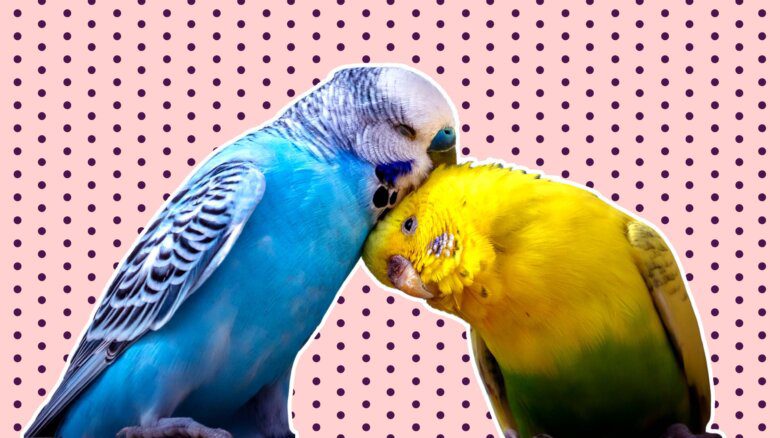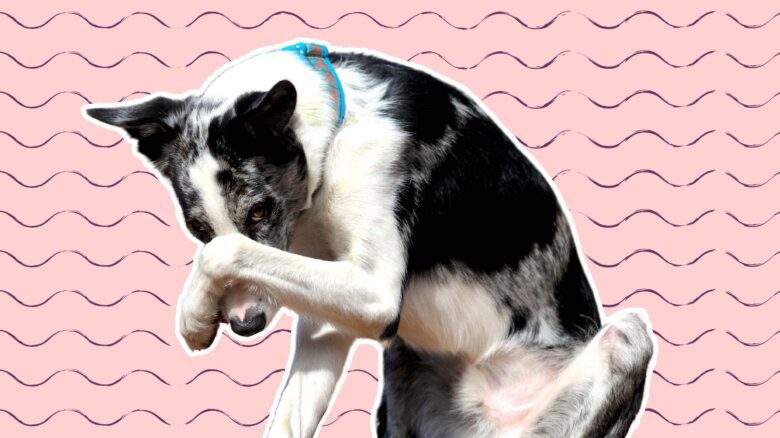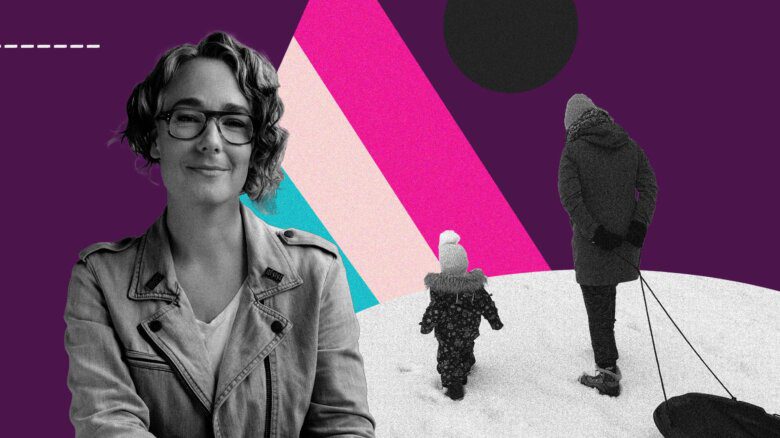
ABSENT BUT NOT MOURNED. Asexual activists distinguish between people who've lost their libido and those who never had one. Credit: (Jonathan Hobin (Jhobin.com))
“I realized that I was asexual the same way I realized that I was short, because people started growing taller than me,” says Cijay Morgan.
The 44-year-old Edmonton-native says knew she was different around age 14 when her friends began to develop attractions and crushes on boys and she didn’t.
“We all had the movie stars on the wall, but eventually they all wanted to do more than meet them and hold their hand,” says Morgan. “I still just wanted to meet them and hold their hand and go for pizza. I just couldn’t figure out why anyone would want to do more than that.”
During her 20s, Morgan would often find herself at the bars with friends, trying to play the dating game along with them, but finding herself completely uninterested in the young men who would hit on her.
“I did think that someday my prince would come,” she says. “But without realizing it [then], my prince would be a princess.
“I can tell you that I am an asexual lesbian because when I am attracted to women I am just not sexually attracted to them,” says Morgan. “I have had two or three major crushes, and I get bummed out that there are no major chances for us.
“It’s not a sexual crush. My storytelling between me and her is living happily ever after and being exclusive and going on holidays and really, really enjoying each other’s company. But it never ends up being in bed.”
It never ends up in bed, she says, because she is without a libido. Morgan says she doesn’t experience physical, sexual desire for other people and never has. She says she does desire intimacy with another woman, just not of a sexual nature.
These days there’s an added requirement for the woman of her dreams: “It would be somebody that was asexual, too.”
Morgan isn’t alone. There are a growing number of individuals who self-identify as asexual. For them, the lack of sexual activity is not a choice stemming from a decision to resist the urge; it’s simply a lack of desire to have sex with another person, and in some cases, an actual repulsion to sexual activity.
“I am not saying that I am broken, but I obviously don’t have a piece of wiring that others get… so, maybe in a way that is a dysfunction, as far as the English language,” says Morgan, who came out to family and friends as an asexual three years ago. “I don’t know… it is just something that never got put into me, not something that is broken.”
Most self-identifying asexuals consider their asexuality to be an orientation, similar to being gay or bisexual. In fact, some “out” asexuals have begun to march in their local Pride parades.
“It’s visibility,” says 18-year-old asexual Nicole Brown. “We need to get the word out there…. Being able to say that [declare one’s asexuality] and have people accept it, that’s something we [asexuals and queers] should fight for together.”
Asexual activists are hopeful that their slowly building movement will not only bring awareness, but understanding that their lack of sexual interest is not a dysfunction, but simply the way they are.
Over the past few years several mainstream news outlets, including the New York Times and ABC Television’s 20/20 investigative news program, have produced extensive pieces on asexuality. The coverage has helped raise awareness of the term and its varied meaning to those in the community.
In addition, it has helped create a growing on-line community at Asexuality.org — the Asexual Visibility And Education Network (AVEN) — launched in 2001. It has more than 20,000 active members.
One of them is Joan, a mid-30s professional living in a suburb of Toronto who asked that her real name not be used. For her, the 20/20 special on asexuality in March 2006 was a turning point.
“As soon as I heard it, I knew immediately I was like that,” Joan says. “I had always thought that I was alone.”
After seeing the show, Joan says she immediately logged onto Asexuality.org.
“It’s one thing to hear about asexuality and still be alone in your apartment and have no one to talk about it with,” she says. “[Connecting with Asexuality.org] was a life-changing moment for me.”
Although she’s an active member of AVEN’s on-line community, Joan hasn’t yet come out as an asexual to her family or friends, preferring to stay in the closet until the term gains more mainstream attention and understanding.
“I still think at this point if I were to say this to people, they would think that there is something wrong with me and my orientation…. I don’t want to be perceived that way. I don’t want the stigma.”
Despite the fact that she’s not out in her personal life, Joan is doing her part to educate the general public. She spoke at a Toronto-area queer group on the topic of asexuality in March.
Many asexuals are active with their local queer rights and Pride organizations, and are hopeful that one day an “A” will be added to the ubiquitous LGBTQ (lesbian, gay, bi-sexual, trans, queer) acronym.
“For myself, it definitely is an orientation and I don’t see why you wouldn’t add it there,” says Joan. She would also like to see sexual education classes in high schools discussing asexuality along with other orientations.
“I think it would help a lot of people figure things out. I would have made a lot of different choices in life had I been aware of this sooner,” she says. “I wouldn’t have wasted time in relationships that were going nowhere. I would have been more actively searching for someone who was asexual.”
In the medical and mental health fields the jury is still out about whether or not asexuality should be classified as a sexual orientation rather than as a variation of hypoactive sexual disorder or sexual aversion disorder. Skeptics argue that asexuals may have been victims of sexual abuse, may be repressed homosexuals or may be suffering from an undiagnosed medical condition.
But asexual activists counter that since their lack of sexual attraction does not, for the most part, cause them distress, it should not be treated as a disorder. After all, homosexuality has also been thought to be a mental disorder that with the right treatment and counselling could be cured.
“But an added difficulty we have over homosexuality is that there are some medical conditions that can cause a person to have no libido as a result,” says Joan. “They could have been perfectly healthy, and had an active sex life before, and then something happens to them and now they have no interest.
“Now they are unhappy about that, and they want to go back to the way they were, and I can see that as a problem. So try differentiating that from someone like myself, who has never had a problem. I have not had an illness that has affected me — I just have always been this way. So, to me it is an easy distinction, but perhaps to someone else, you know, it might not be.”
Morgan dismisses psychological explanations of asexuality.
“When it comes to anything psychological, it’s just their opinion…. They are working with opinion; I am working with fact. I don’t think asexuality exists; I know it exists.”
There has been little scientific research into asexuality, although the few studies that have been published indicate that asexuality, like homosexuality, does occur in other mammals. A study of sheep published by the University Of Chicago Press in 1994 found that two to three percent of rams were not interested in sexually interacting with either males or females.
In 2004 Anthony Bogaert, a psychologist and human sex-uality expert at Brock University, published a report on asexuality in The Journal Of Sex Research. Bogaert’s study found that roughly one percent of survey respondents had indicated that they had never felt sexually attracted to anyone at all. The findings helped to spark much of the recent press regarding asexuality.
Brown says understanding asexuality is an important step in garnering society’s acceptance.
“First you have to understand before you can accept,” says Brown. “If they can’t get past the understanding, then they are very skeptical — for both the gay and lesbian community and heterosexuals — it is extremely difficult for them [sexual people] to understand, ‘Wait, you don’t like sex?’ They expect that [libido] to be there and when it’s not, they don’t believe it.”
That attention and understanding is not just important for young asexuals like Brown, but for the younger generation who may have an opportunity to grow up in a more accepting world.
“They will be able to see it and help define themselves,” Brown, an 18-year-old University Of British Columbia freshman who is out to friends but not her family.
“I would hate to be that one [asexual] person that because they never knew, they didn’t identify. For me that is why it is so important to get the word out, so that asexuality is as well known as homosexuality and so that people who are trying to figure themselves out have that as an option.”

 Why you can trust Xtra
Why you can trust Xtra


